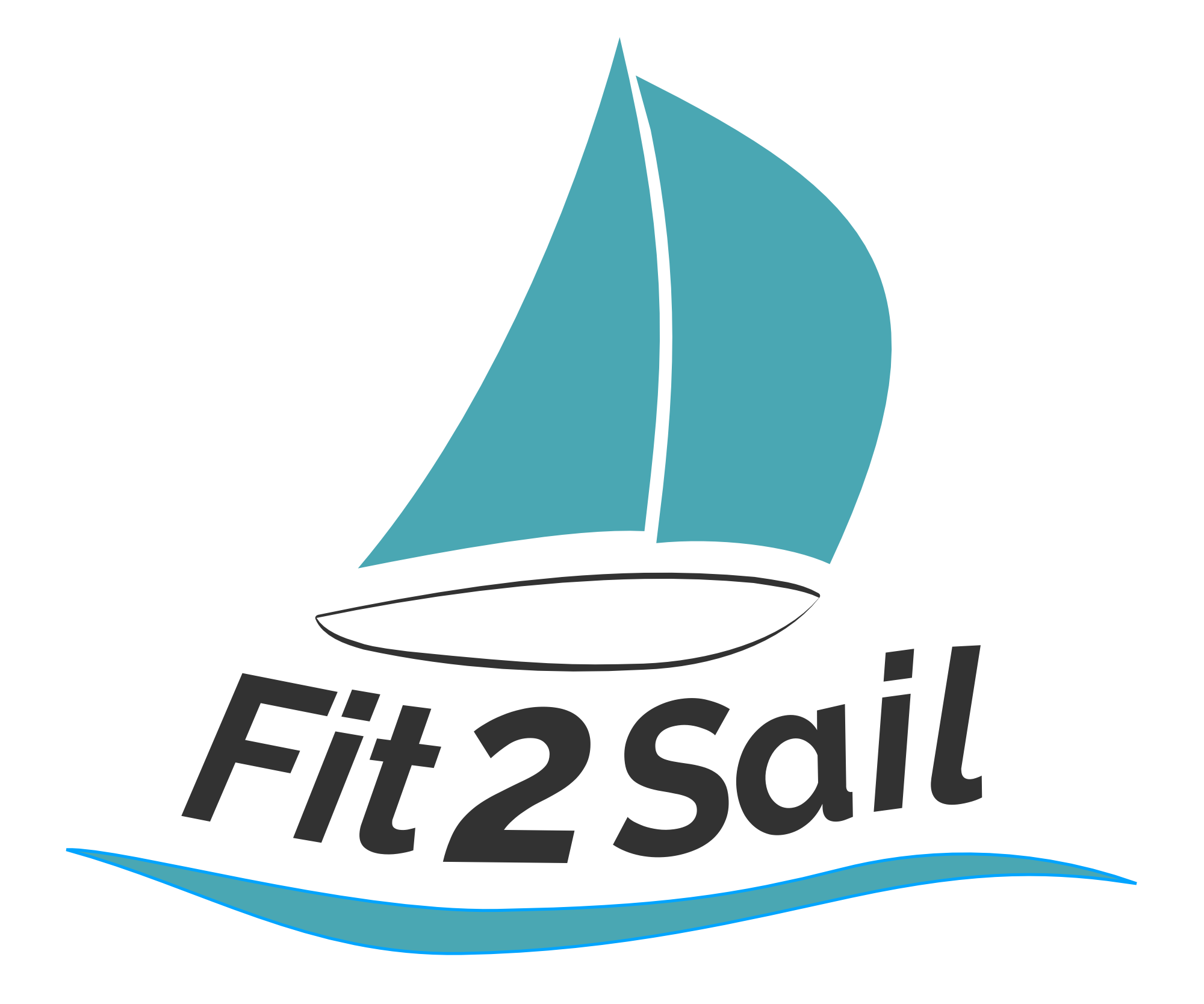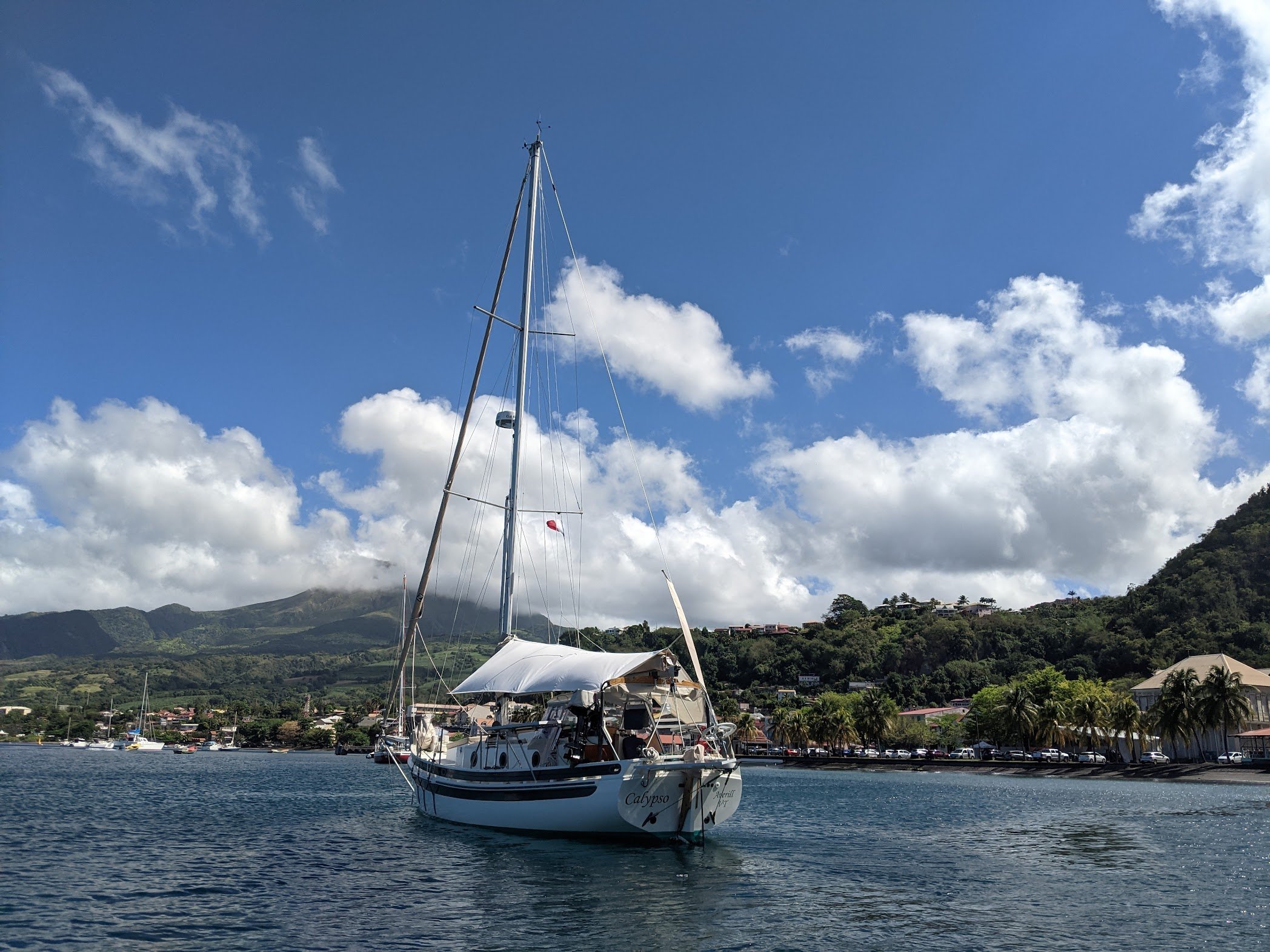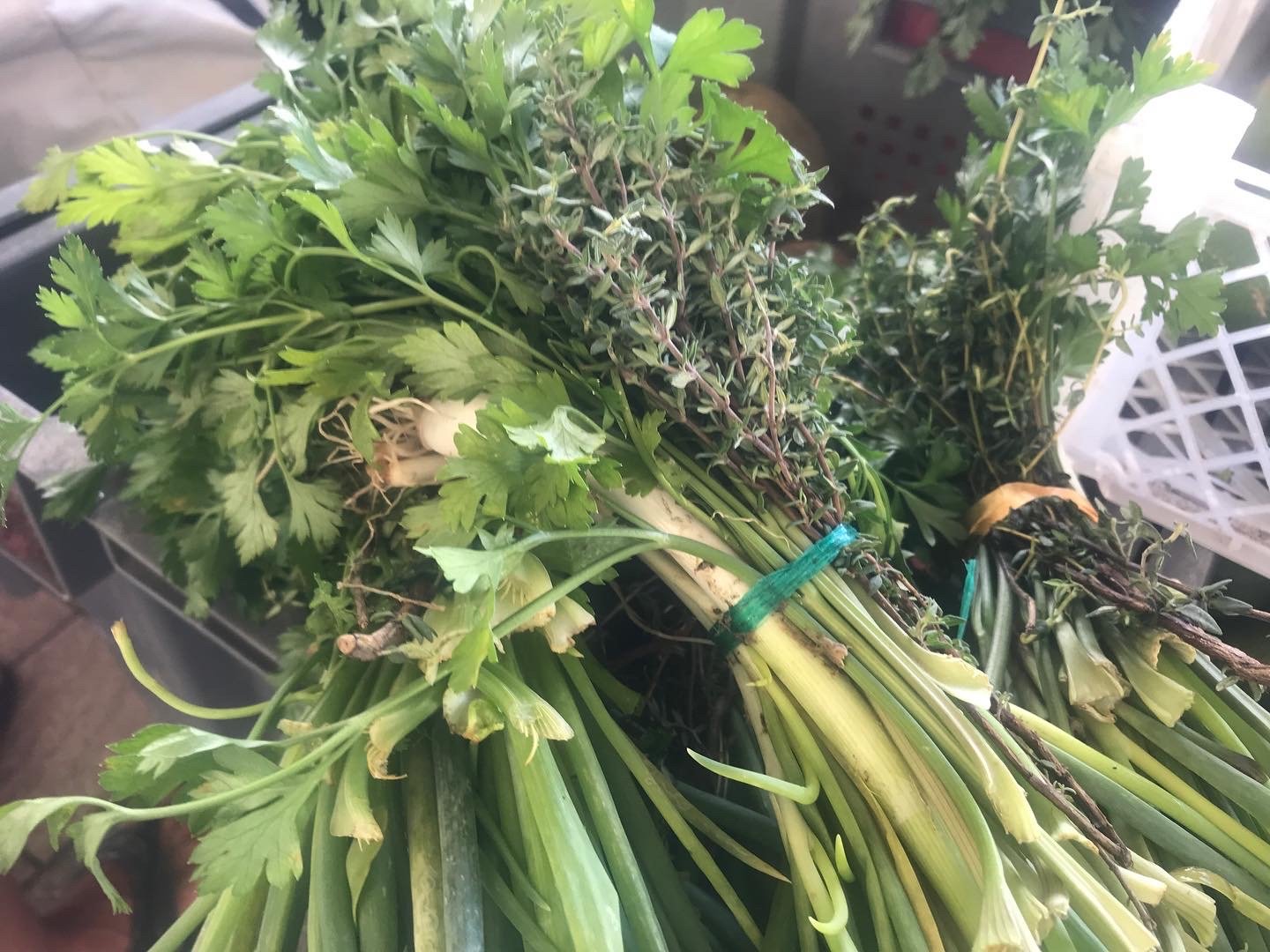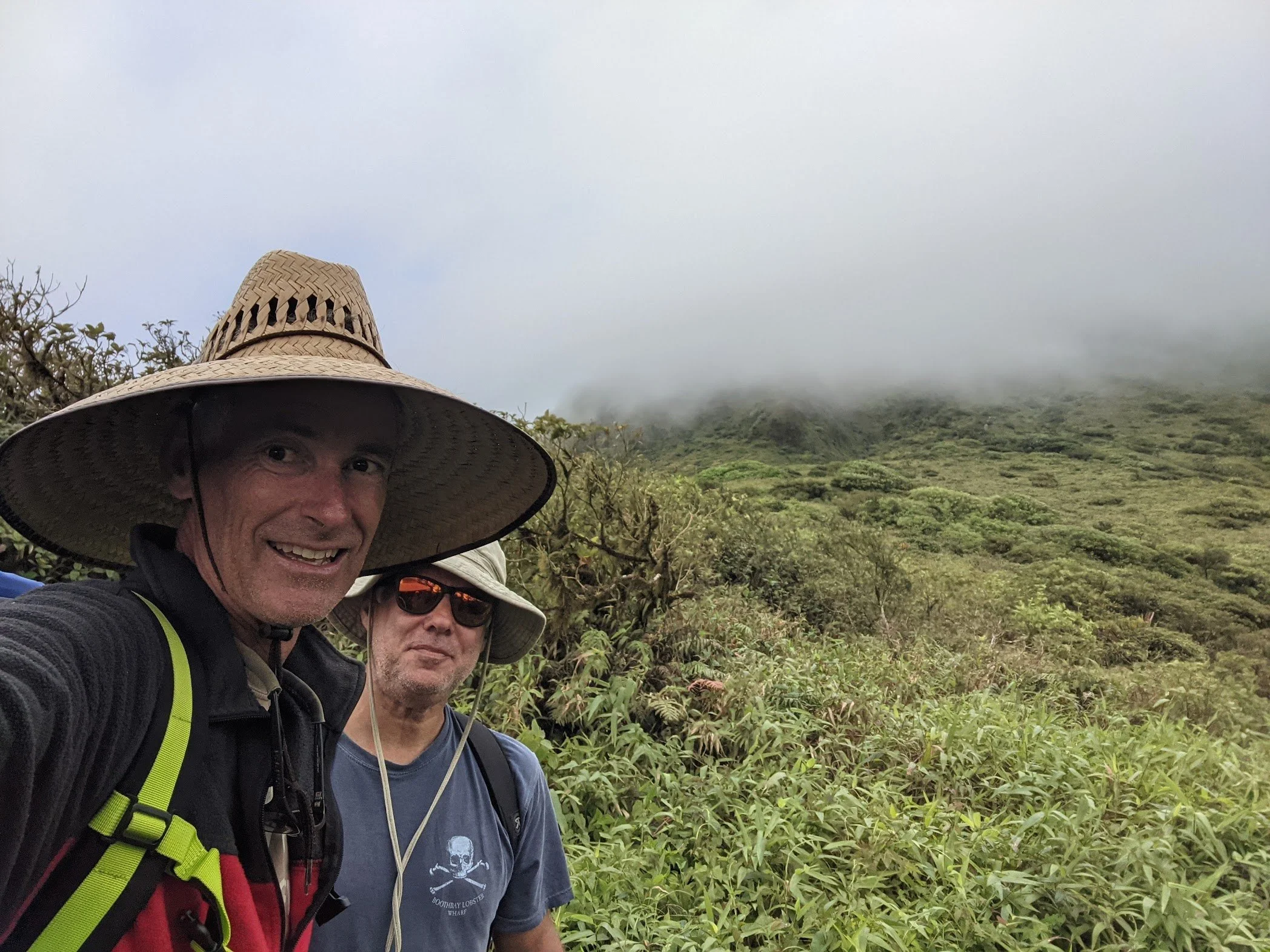St Pierre, Martinique
Possibly the most stunning setting in which we’ve anchored so far, St Pierre, Martinique is a study in contrasts and an interesting introduction to a new island when coming from the north.
Calypso with mist-shrouded Pelee off the bow
We sailed down from Dominica in a strategically-timed window between major squalls, finding a good spot to anchor in about 20 feet of water not too far from the dinghy dock. Once we cleared in, it was time for some exploration.
Calypso under sail (photo courtesy Enki)
St Pierre’s claim to fame, as it were, is that the entire town was wiped out by a pyroclastic blast when the volcano Mount Pelee spewed its stuff on the morning of May 9, 1902. Boats in the harbor exploded as a result of the heat blast. There were only a few survivors in the town of 28,000 people - the most notorious of which was a prisoner in the jail who was found 3 days after the blast. In a blatant example of the twisted nature of humanity, Barnum and Bailey circus later employed him as an exhibit . . . Up until that point, St Pierre had been THE hub of the island of Martinique, nicknamed “the Paris of the Caribbean”.
Jail ruins have been taken over . . .
Now, St Pierre is “just” a small town with a rich history. It’s a relatively easy spot to visit. There’s a dinghy dock, a daily vegetable and craft market that burgeons on Saturdays, and numerous bars and restaurants. The bus stop is just a few hundred feet down the street from the dock. A small grocery store stocks the essentials. The only thing missing is a boulangerie that’s worth visiting: both of the bakeries in town sell what might be the worst baguettes and pain au chocolate we’ve ever eaten.
Herb bundles for cooking, sold pre-packaged at the market
There’s a small museum dedicated to the 1902 eruption. The exhibits are in nicely-lit rooms and offer a glimpse into life in the late 1800s as well as a sobering timeline of the eruption: a few boats in the harbor had fled from Precheur, a town a bit farther up the coast that was “hit” by the volcano a week prior, only to be lost in St Pierre. There’s been a lot of work recently to document the names of those killed, and there’s one whole room just with names.
Ruins overlooking the harbor
Mount Pelee serves as the backdrop of the anchorage and a tantalizing goal for any hiker. I was still pretty incapacitated by my knee and was barely up for a walk to the museum; a challenging hike to the 4500 foot volcano was not even up for contemplation. Jeremy, though, was determined to do it - and he had a willing accomplice in Jamie from Enki. SunYoung would have joined in except she’d sprained her ankle and was taking it easy.
Jeremy and Jamie, misty Pelee hike in progress. Note the fleece!
After a lot of back and forth logistics research involving bus routes, weather, timing, and more, I dropped the boys off at the dock at 6:20 am. By 3 they were back, exhausted, sore, hungry, and thirsty - and elated that they’d done the hike.
Panoramic view from Pelee; snagged a break in the clouds!
On the way down from Pelee
There are more hikes to be done in St Pierre, and it’s a good spot to base yourself for exploring the northern part of the island by bus. The scenery is stunning, though the anchorage is rolly in any kind of swell. We’d be happy to come back!
Martinique basics:
Language: French (though many people speak at least some English)
Currency: Euro
Ports of Entry (N-S): St Pierre, Fort-de-France, Anse Mitan, Grand Anse D’Arlet, Le Marin
A note on rum: Rhum agricole, which is what you can find here, is made directly from sugar cane (not molasses). It is a different taste; if you’re wed to your “English” rum, bring enough to last your stay.
Rhum agricole in production
A note on anchoring. There are a few spots in the Caribbean so far where mooring balls are sprouting up like weeds. The ostensible reason is to protect the sea bed, especially in places where there’s coral or the seagrass that’s a habitat for turtles. This is a fabulous reason. That a lot of the mooring balls we see are solidly in sandy areas which would also be fabulous anchoring spots makes this perhaps less plausible . . .
The other ostensible reason is to allow for more dense boat berthing. This one seems to be the rationale in many harbors in New England, for example, and it definitely fits the bill. Why you might want to be what we call “grey poupon close” to your neighbor is a different question entirely . . .
View towards the mooring field in Block Harbor
The other, more cynical way of seeing the moorings is as a revenue source. This may be a good reason, especially for the person maintaining the mooring. And a lot of places disallow anchoring within the mooring field (which makes sense, to be honest - moorings generally are on shorter scope and the swing radius will be different.) But are they maintained? Sure, most boats hang on most commercial moorings with nary an issue. This isn’t always the case. There have been some spectacular failures of moorings, including one high profile one in Bora Bora. While most moorings in most places seem to be in very good condition, the fact remains that you’re trusting your boat to someone else’s gear. Dive on it to check? In a lot of places, the moorings are in deep harbors, making it hard to dive down to inspect the gear. And if you’re paying up to $70 a night for a mooring, aren’t you kind of inclined to trust the gear?
Mooring field, Les Saintes, Guadeloupe
It is generally our preference to anchor where allowed. The only place thus far where we’ve grabbed a mooring (which was free) where we could have anchored is Les Saintes: we chose to pick up a mooring because we were lazy about anchoring in 35 feet of water or in a spot quite far from town. We still inspected it as closely as we could.











